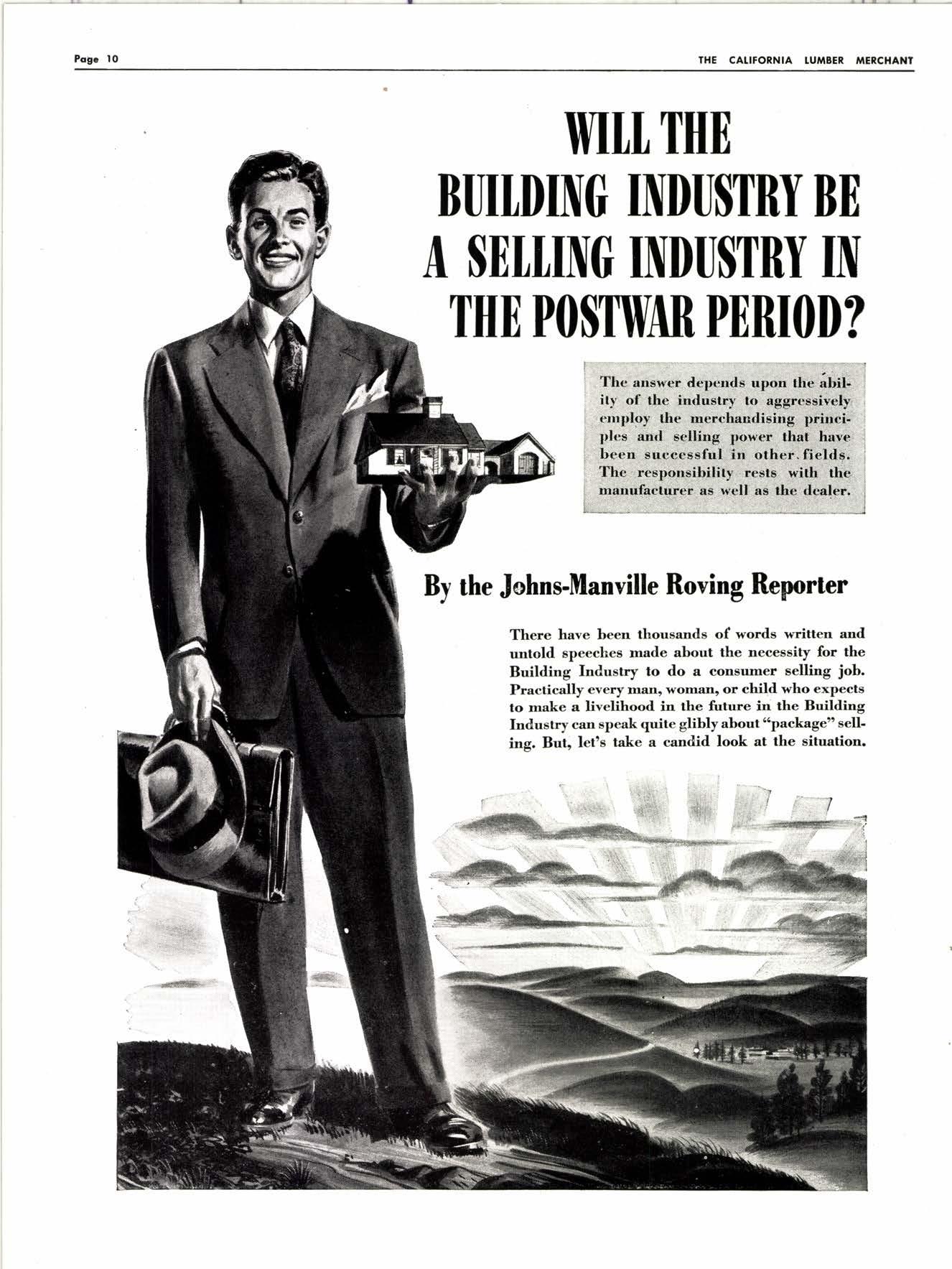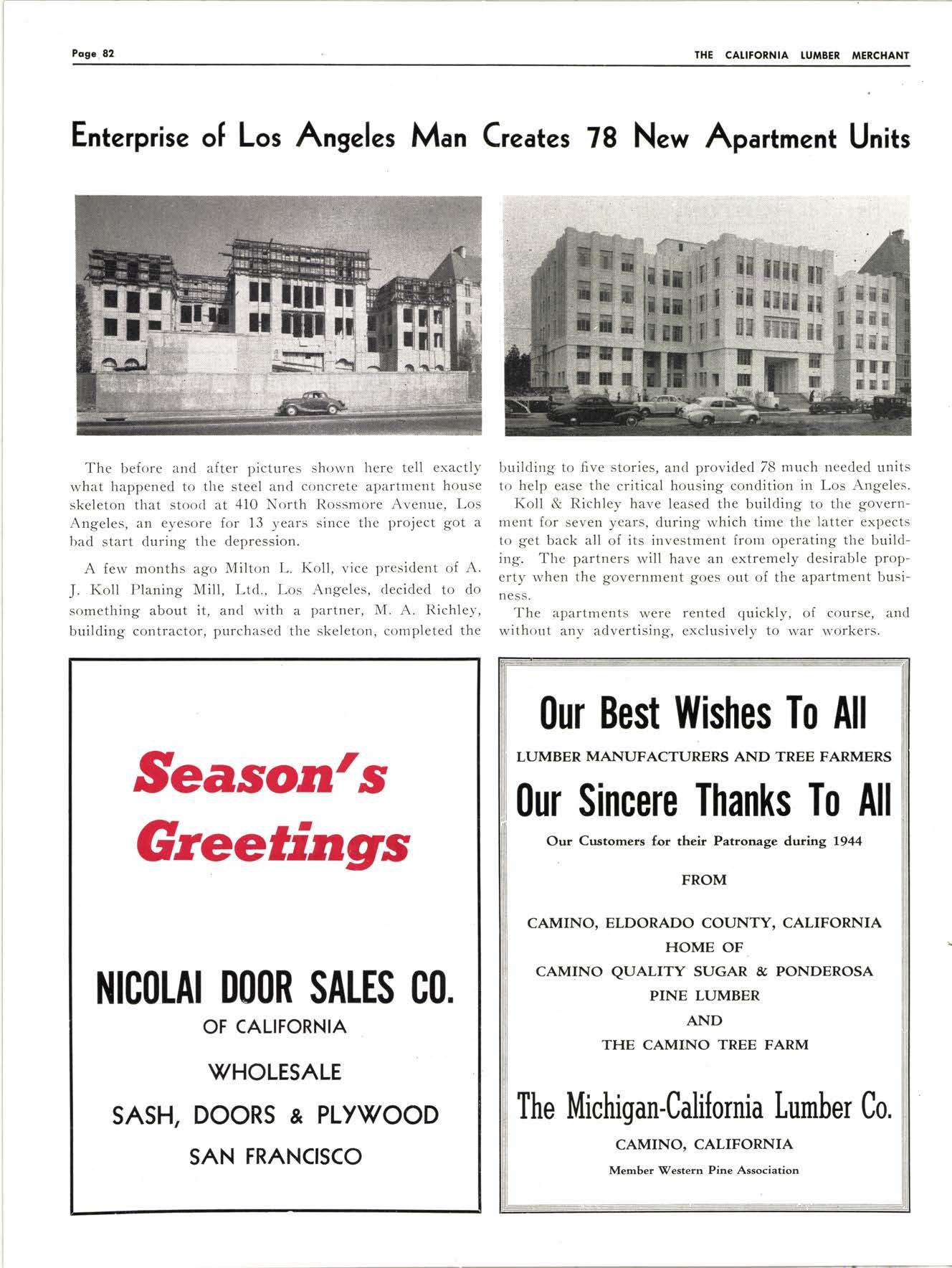
3 minute read
BUITDINO INDU$TBY BB A $BI,I,INO INDU$TBY IN THN P()$TlryAB PBBI(ID?
By the Jahns-llanville Boving Reporter
There have been thousande of words written and untold speeches made about the necessity for the Building Industry to do a consnrner selling job. Practically ever)r man, wornanr or child who expects to rnake a livelihood in the future in the Building fndustry can speak quite glibly about oopackage" selling. But, letts take a candid look at the situation.
f tr fE ARE LTVING in a very unusual economy today.
Because of the war, manufacturers cannot produce anywhere near enough goods to supplytheneeds of their customers.
Some have been hit harder than others. If the manufacturer's plant happens to be located in an area which the War Manpower Cornrnission qalls a No. 1 critical area, he is able to produce goods only in accordance with the manpower he can scrape out of the bottom of the banel. If the manufacturer is in a No.2,3 or 4 area, he can prduce mone goods.
The Big Battle is Ahead,
As a result, there have usually been just about enough building materials available from all sources to pennit the dealers of the country to chug along on two or three cylinders, and in the main to keep their businesses afloat.
Some day this abnormal economy will end and the real battle for survlval will begin. All of us have read the staggering figures ofpotentials for the Building Industry after the war. But let's not be misled. Those potentials that we hear bandied about can dissolve into a fine mist when the manufacturers of automobiles, washing machines, vacuum cleaners, and all those other products supplying other consumBr needs get their selling organizations out into the field and go after the consumer dollar in the post-war world.
A Challenge to the Build.ing Industry
What do those manufacturers have that we don't have? Ilere, I believe, js a challenge to all of us in the Building Industry. Those manufacturers in other industries have the selling power of brand names which have obtained the confidence of the people through national advertising-and, strong dealer organizations with well-trained consurrer salesmen.
Now if we are candid with or:rselves, we all know that the American economy of the future is going to be far more competitive than any we have known before. When we in the Building Industry speak of becoming a selling industry, it means that the manufacturer must provide the consumer salesmen with brand identification that has national consumer acceptance. And. it means that the manufacturer and the dealer must build and train an adequate consumer selling organization. Without these we cannot compete successfully with salesmen in other fields.
_ The other day I sat in a meeting with a group of Johns-Manville executives, and there f saw post-war planning which was not just so many words. It was the qoo{ solid thinking of experienced men who were really "pulling a bead" on this whole problem. They were not only looking to the future, but they were analyzing the past. Let me quote just one statement:
"I know these are troublesome times for our dealers, and I know that our inability to furnish them with a lot of our products, because of our shortage of manpower, is a matter of great concern to many of the dealers who have been loyal to Johns-Manville for years.
J-DI
Radia Program
'T!ut very soon their problems will be selling problems. For the past decade through national and local training schools, we have taken the lead in the effort to make the Building Industry a selling industry.
"Since 1941, when corxrumer selling became a war casualty, we haye been truly doing a post-war planning job with the Johns-Manville Radio Program, .Bill Henry and the News.' For 5 nights a week, b2 weeks a year, this program, the most popular news program on the air, hner b€€n reaching an audience of over 30 million people month after month, for nearly 3 years.

Hucation of Deol.er Sal.esrien
'Yes, it has cost a lot of money. But the corurumer acceptance we have built for our name and on which our dealers can capitalize will pay dividends in the competitive days ahead. This indispensable consumer selling assetplus our plans for dealer clinics and the development of the proper equipment to educate consillmer salesmen for our dealers is Johns-Manville's answer to making the Building Industry a selling industry in the post-war period."
Planning for the Future
This quotation is typical of Johns-Manville planning for the future. We hope that every serious-minded manufacturer in our field is thinking along similar Iines. We are convinced that only through the best thinking and the co-operation of all can the Building Industry become a selling industry and meet the competitive problems of the future.










